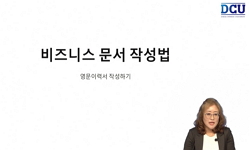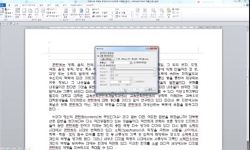This research has been done in Sejong Metropolitan City which was once called to be the old Yeongi district. A number of shamans and monks have been actively worked on shamanism since the old times. Therefore, the purpose of this study is to examine p...
http://chineseinput.net/에서 pinyin(병음)방식으로 중국어를 변환할 수 있습니다.
변환된 중국어를 복사하여 사용하시면 됩니다.
- 中文 을 입력하시려면 zhongwen을 입력하시고 space를누르시면됩니다.
- 北京 을 입력하시려면 beijing을 입력하시고 space를 누르시면 됩니다.
https://www.riss.kr/link?id=A100081800
- 저자
- 발행기관
- 학술지명
- 권호사항
-
발행연도
2014
-
작성언어
Korean
-
주제어
무속 ; 무당 ; 법사 ; 세종시 ; 무속 전승양상 ; 문서 ; 무구 ; 정체성 ; 강순예 ; 김정순 ; 노향순 ; 김진환 ; Sejong Metropolitan City ; Shaman ; Shamanism ; Exorcism ; Transmission ; Traditional culture ; Identity ; The shaman rite for the household god
-
자료형태
학술저널
-
수록면
51-111(61쪽)
- 제공처
- 소장기관
-
0
상세조회 -
0
다운로드
부가정보
다국어 초록 (Multilingual Abstract)
The subjects of this study are Kang, Sun-ye, Kim, Jeong-sun, No, hyang-sun and the monk Kim, Jin-hwan(the monk means a male shaman in this research). This research consists of answers to four and other main questions which are mentioned below: 1) how did subjects suffer from [sin byung(cryptogenic physiological and psychological symptoms that shamans would suffer from before becoming shamans)], 2) did they undergo [nae rim gut(an invocatory rite to be a shaman)], If so, who did it for them, 3) did they learn [Mu-gyung(documents written down about abilities of shamanistic spirits)] in order to do shamanistic ritual, and finally 4) from whom did they learn how to play musical instruments such as drum or kkwaenggwari (Korean small gong)? Subjects’ answers are summarized and recorded in this study without making any adjustments.
Although this research is somewhat limited in that the study is based on the verbal data from four subjects, this study would be useful because it can be used to understand Shamanism in Sejong city. In fact, all of the research subjects have engaged in Shamanism fields for a long time in this region. Hence, they have well carried through the traditional Shamanism culture of this region. In this respect, their experiences represent Shamanism culture in this region.
This research has been done in Sejong Metropolitan City which was once called to be the old Yeongi district. A number of shamans and monks have been actively worked on shamanism since the old times. Therefore, the purpose of this study is to examine passed-down aspects of Shamanism in Sejong Metropolitan City focused on shamans and monks.
The subjects of this study are Kang, Sun-ye, Kim, Jeong-sun, No, hyang-sun and the monk Kim, Jin-hwan(the monk means a male shaman in this research). This research consists of answers to four and other main questions which are mentioned below: 1) how did subjects suffer from [sin byung(cryptogenic physiological and psychological symptoms that shamans would suffer from before becoming shamans)], 2) did they undergo [nae rim gut(an invocatory rite to be a shaman)], If so, who did it for them, 3) did they learn [Mu-gyung(documents written down about abilities of shamanistic spirits)] in order to do shamanistic ritual, and finally 4) from whom did they learn how to play musical instruments such as drum or kkwaenggwari (Korean small gong)? Subjects’ answers are summarized and recorded in this study without making any adjustments.
Although this research is somewhat limited in that the study is based on the verbal data from four subjects, this study would be useful because it can be used to understand Shamanism in Sejong city. In fact, all of the research subjects have engaged in Shamanism fields for a long time in this region. Hence, they have well carried through the traditional Shamanism culture of this region. In this respect, their experiences represent Shamanism culture in this region.
목차 (Table of Contents)
- 1. 머리말
- 2. 강순예 무녀
- 3. 김정순 무녀
- 4. 노향순 무녀
- 5. 김진환 법사
- 1. 머리말
- 2. 강순예 무녀
- 3. 김정순 무녀
- 4. 노향순 무녀
- 5. 김진환 법사
- 6. 맺음말
- 〈참고문헌〉
- Abstracts
동일학술지(권/호) 다른 논문
-
- 충남대학교 충청문화연구소
- 김상기(Kim, Sang-ki)
- 2014
-
- 충남대학교 충청문화연구소
- 김정태(Kim, Jeong-tae)
- 2014
-
- 충남대학교 충청문화연구소
- 오홍진(Oh, Hong-jin)
- 2014
-
- 충남대학교 충청문화연구소
- 임기대(Lim, Gi-dae)
- 2014




 RISS
RISS DBpia
DBpia







